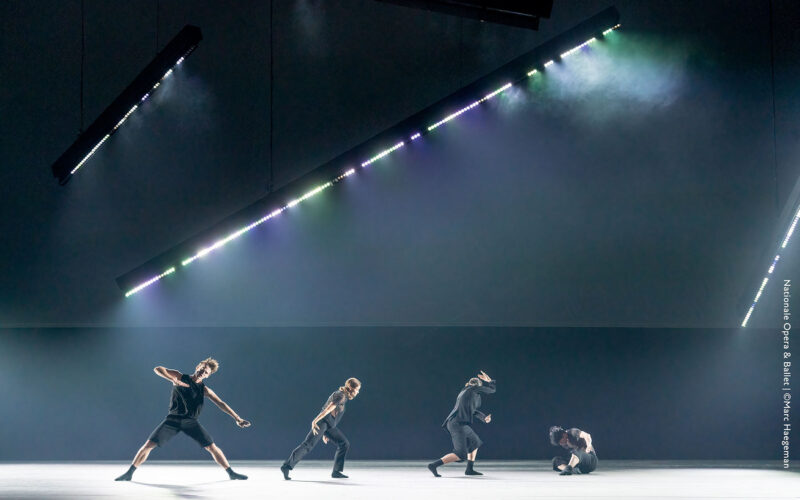
Stark, raw, and provocative, Full Frontal is an uncompromising new dance piece by Choreographer Juanjo Arqués billed as ‘a ballet about real people and actual feelings’ set to “Weather One” a musical score by Michael Gordon. It was presented by the Dutch National Ballet and staged at the Dutch National Opera in Amsterdam. It explores the stresses and tensions of our fractured and often polarized society as it faces physical obstacles that swap—ironically—with psychological projections of challenging conditions.
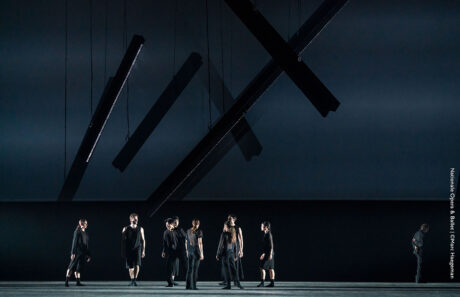 Full Frontal was the final work in Four Temperaments, a performance featuring the work of four unique choreographers, and was lit by Yaron Abulafia who enlisted the help of 40 Robe Tetra2 moving LED battens and an automation system. He blended the intense emotion and paradox of dance with the drama and structural discipline of installation art to produce a truly outstanding visual encounter that immersed and enthralled audiences and the artists.
Full Frontal was the final work in Four Temperaments, a performance featuring the work of four unique choreographers, and was lit by Yaron Abulafia who enlisted the help of 40 Robe Tetra2 moving LED battens and an automation system. He blended the intense emotion and paradox of dance with the drama and structural discipline of installation art to produce a truly outstanding visual encounter that immersed and enthralled audiences and the artists.
The Tetra2s assisted Abulafia in sculpting his daring and combative light show for the 21-minute Full Frontal performance, which was created in close collaboration with Arqués, set and Costume Designer Tatyana van Walsum and dramaturg Fabienne Vegt. Choreographer Arqués underlined the relevance of lighting: “Yaron proposed a beautiful light sculpture made of moving beams that are floating in space. The idea of having such a monumental structure over the dancers’ heads allowed me to drill down deeper into emotions, build tension, and achieve infinite light options, empowering the aesthetics and the dramaturgy of the piece.”
Full Frontal was one of two works being premiered together with two revivals as Four Temperaments. It was Abulafia’s first time working with the Dutch National Ballet, although he has collaborated with numerous other high-profile international ballet companies around the world. He specifically wanted to create walls of light with the Tetra2s as they descended from the ceiling and tilted in different directions and trajectories interacting with and confronting the dancers effectively providing extra—and unexpected—kinesis for a 13-minute section of the work.
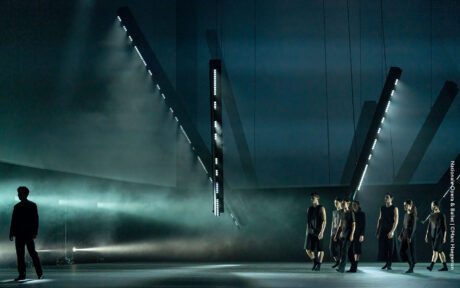
“This piece was a rollercoaster,” commented Abulafia, “driven by the anxieties, unknowns, and complexities of events like full-scale war, the global pandemic and other destabilizing factors like ongoing natural disasters and climate change. I needed to accentuate all this expression, intensity and emotion, all the peaks and breakdowns, strengths and vulnerabilities of the performance with a stark and different style of lighting.”
The idea of using lighting in this way as an essential atmosphere builder for a ballet work is new, bold, and certainly shredded people’s comfort zones, and it was a process that Abulafia presented even before the initial dance rehearsals. The stage space was defined by some special stretched plastic 9-metre-high walls installed 2.6 meters off the ground and 22 meters apart widthways, with special side lighting.
The Tetra2s were rigged on 6 trusses measuring 10, 9 or 8 meters in length, all flown with different orientations in different parts of the overhead grid. The automation system enabled them to fly in and out—like pressure moving down from the ceiling and crushing into the space below. They tilted and shifted, dynamically and dramatically changing the architecture and physics of the space, opening it up and closing it down as they interacted with the dancers.
The Tetra2 fixtures were onstage for 13 minutes of Full Frontal creating barriers, ruins and walls between which the dancers would dodge and spiral to points of no return. Their role was as metaphorical as it was physical. Abulafia specifically wanted Tetra2s for the quality of the light and he knew the sheet light effect was spot on for evoking the sense of urgency and alarm that pervaded.
He has worked with the luminaires previously on a few productions. “I needed this technology from Robe as it is a powerful light source that looks and feels properly tactile in the contexts in which I wanted to use it, and I knew it would also provide the right architectural elements,” he explained. For this work, he was more interested in utilizing the beam aspects of the Tetra2s rather than the lensing, although the excellent 4 – 45-degree motorized zoom did come in handy. Once they were confirmed for the project, Abulafia and the creative team brainstormed numerous ideas and explored the use of the lights for shadows, space, and proximity to the dancers. “The Tetra2 trusses really essentially brought six extra dancers onstage,” noted Abulafia.
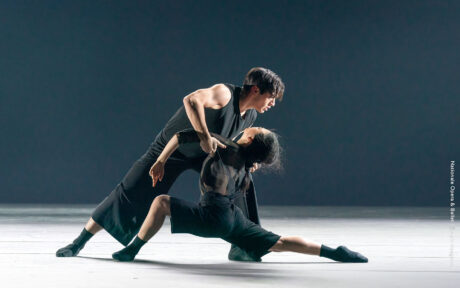
Onstage tech time was extremely tight as the three other pieces also all had to have their allotted slots. Being one of the two new productions of the four also meant more unknowns and therefore more challenges. Abulafia did as much preparation as possible to maximize that precious onstage time, and he praises the “fantastic teamwork” of the Opera House crew which also ensured everything ran as smoothly as possible.
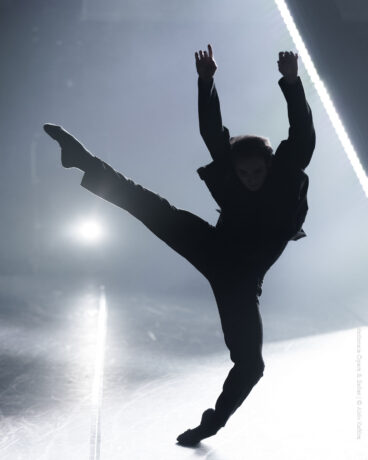 Arqués also appreciates Abulafia’s organizational skills, revealing how Abulafia produced drawings of each of the scenes that explained where the light sources would be coming from, the patterns they would make on the floor, and other technical information like timings, all of which “made it very comfortable for me to create the movement material in the studio: elucidates the choreographer.
Arqués also appreciates Abulafia’s organizational skills, revealing how Abulafia produced drawings of each of the scenes that explained where the light sources would be coming from, the patterns they would make on the floor, and other technical information like timings, all of which “made it very comfortable for me to create the movement material in the studio: elucidates the choreographer.
It was Arqués’s and Abulafia’s first collaboration, but both are already looking forward to the next time. “Yaron is a passionate artist who loves working as part of a team, enjoys every part of his job, and delivers a unique signature every time,” concluded Arqués. Lighting was programmed via a grandMA3 console and was run completely manually following and feeling the pace and timing of the visual and musical cues.
Dutch National Ballet Director Ted Brandsen also noted how “lighting played an essential role in the success” of this production, adding that while coordination between the technical elements, moving light fixtures and other scenic elements plus the dancers’ movements and choreography was a huge challenge of its staging, he was delighted with the results. “It was a very innovative, expressive and new way of experiencing dance,” he concluded.
The Tetra2s were supplied to the production by Ampco Flashlight. The Dutch Ballet Orchestra was conducted by Matthew Rowe and accompanied the soundscape, and the sound designer was Ian Dearden.
Further information from Robe: www.robe.cz
Photos: By Marc Haegeman & Altin Kaftira


